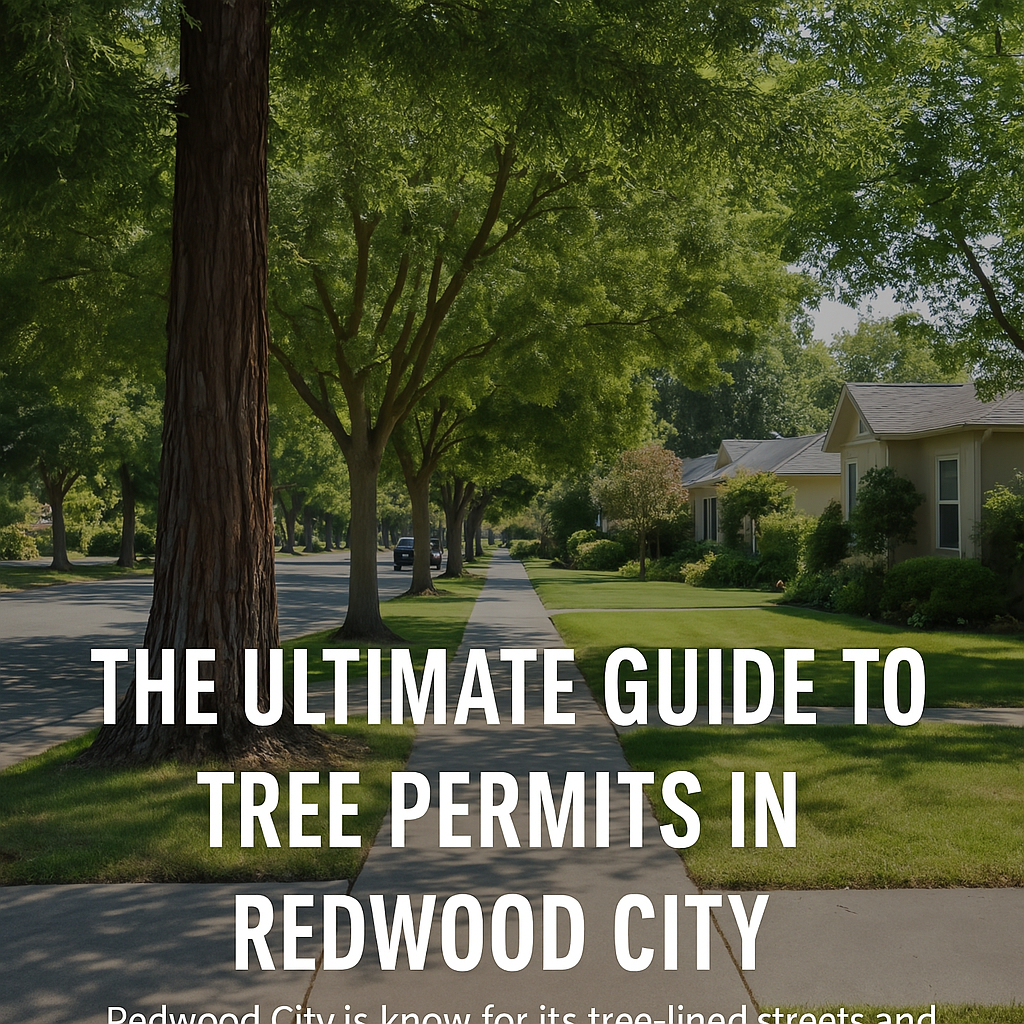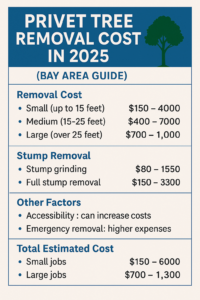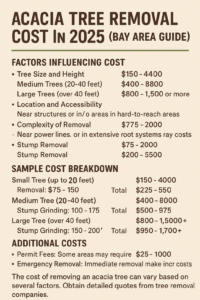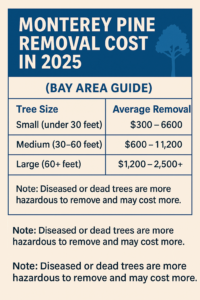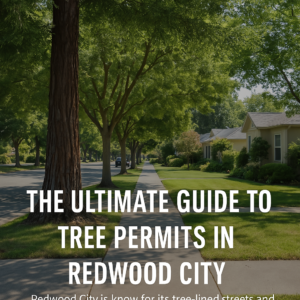Redwood City is known for its tree-lined streets and lush residential neighborhoods—but that greenery comes with responsibility. Whether you’re removing a hazardous tree or planning new construction, it’s important to know: you may need a permit to remove a tree—even on your own property.
Redwood City has specific ordinances in place to protect its urban forest, and violating them can lead to fines and delays. This guide walks you through everything you need to know about tree removal permits in Redwood City, from what’s considered a “protected” tree to how to apply for approval.
Do You Need a Permit to Remove a Tree in Redwood City?
The Quick Answer
In many cases, yes. Redwood City’s municipal code requires a permit for the removal of certain trees based on their size, location, and health. This includes trees on both residential and commercial properties—even if the tree is healthy and privately owned.
Tree removal permits are designed to:
- Prevent unnecessary removal of mature trees
- Maintain the city’s green canopy
- Protect the environment and public safety
Why Tree Permits Are Required

Trees provide more than just shade—they help reduce stormwater runoff, improve air quality, and support local wildlife. As Redwood City continues to grow, the city wants to ensure that tree removal is done responsibly and only when necessary.
Permits allow the city to:
- Evaluate the health and risk of the tree
- Determine whether alternatives (like pruning or relocation) are possible
- Require replacement trees when appropriate
What Counts as a Protected Tree in Redwood City?
City-Protected Trees
According to the city’s tree ordinance, a permit is generally required to remove any tree that meets these criteria:
- 36 inches or more in circumference, measured at 4.5 feet above ground
- Located on private or commercial property
- Not classified as a “weed species” or invasive tree
This means that many trees—such as oaks, sycamores, redwoods, and even some fruit trees—may fall under protection if they meet the size requirement.
Even if a tree seems ordinary or isn’t native, its size alone can trigger the permit requirement.
Street Trees
Trees growing in the public right-of-way—typically the area between the sidewalk and the street—are considered street trees and are public property.
You cannot prune or remove a street tree without prior approval from the city. In most cases:
- The city handles regular maintenance
- Homeowners must submit a request if the tree is causing issues (e.g. lifting sidewalks, interfering with utilities)
Removing or damaging a street tree without permission can result in city-issued citations or legal action.
Common Scenarios That Require a Tree Removal Permit

You’re Renovating or Adding to Your Home
If you’re planning an addition, new garage, ADU, or any construction that could affect a tree’s root system or canopy, you may need to file for a Tree Removal or Protection Plan alongside your building permits.
In Redwood City, construction-related removal typically requires:
- A tree inventory report
- A site plan showing tree locations and structures
- Approval from the Planning Division
Even if the tree isn’t directly in the way, any nearby excavation, grading, or heavy equipment use that may damage the root zone could be grounds for permit denial or required mitigation.
The Tree Is Healthy but Inconvenient
Unfortunately, inconvenience alone isn’t enough. Common reasons like:
- Dropping too many leaves
- Blocking a view or sunlight
- Being “too close” to the driveway
…won’t justify a permit approval unless you can demonstrate a legitimate hazard or structural conflict.
The city’s goal is to preserve healthy, mature trees unless there’s a clear reason for removal—especially those over 36 inches in circumference.
You’re Selling, Buying, or Renting Property
Real estate transactions often bring up tree-related questions. If an inspection reveals a large tree near a structure, potential buyers or agents may suggest removal to reduce risk.
Before acting on that:
- Check if the tree is protected
- Ask your real estate agent to consult with the city
- Avoid removing trees before verifying if a permit is required—it could hold up the sale or result in penalties
A better approach? Have a certified arborist evaluate the tree and include documentation in your property disclosure.
How to Apply for a Tree Removal Permit in Redwood City
Application Steps
Here’s how to start the process:
- Download the Tree Removal Permit Application from the City of Redwood City’s website
- Provide basic property and tree information:
- Address
- Species (if known)
- Circumference and location of the tree
- Reason for removal
- Address
- Attach photos of the tree and any affected structures
- In some cases, provide an ISA-certified arborist’s report or site plan
- Submit the application to the Planning Division by email or in person
For large properties or complex cases, a Tree Protection Plan may also be required.
Permit Fees and Timeline
Fees vary but typically start around $75–$150 per tree. You may be charged additional fees for inspections or mitigation requirements (like replanting trees).
- Processing usually takes 7–14 business days
- A city arborist may visit your property to inspect the tree
- If approved, you’ll receive specific conditions, such as the requirement to plant new trees or to dispose of the removed tree in an eco-friendly manner
What Happens After Approval
Once your permit is approved:
- You may need to remove the tree within a certain time frame (often 30–90 days)
- You must use a licensed tree contractor
- You may be required to replant one or more trees as part of the approval conditions
Pro tip: Keep a copy of your permit and take before/after photos in case questions arise during or after the project.
Emergency Tree Removals in Redwood City
When Permits Are Not Needed
Sometimes, there’s no time to wait for permits—especially after a major storm or sudden failure. Redwood City allows emergency removals in the following cases:
- The tree has fallen and is blocking access or causing damage
- There is a clear and immediate hazard to people or property
- The tree is severely cracked, leaning, or root-lifted following weather events
In these cases, you may proceed with removal without prior approval—but you’ll need to report the removal to the city shortly afterward.
What to Do After the Emergency
Even in an emergency, you’re responsible for following up. Be sure to:
- Take detailed photos before and after removal
- Ask a certified arborist to provide a written assessment if possible
- Notify the Planning Division within 48 hours of the removal
- Submit any follow-up paperwork the city requests
Emergency removals that aren’t documented properly can still result in penalties, so it’s better to go the extra step to ensure compliance.
What Happens If You Remove a Tree Without a Permit?

Fines and Penalties
Redwood City takes tree protection seriously—and removing a protected tree without a permit can lead to significant consequences, including:
- Fines of $1,000 or more per tree
- A requirement to replant multiple trees to offset the loss
- Possible stop-work orders if the removal is tied to a construction project
- Delays or denial of future permits for your property
The city may also involve legal enforcement if removals are repeated or egregious, especially for heritage or street trees.
How to Avoid Issues
Avoiding these penalties is simple: when in doubt, check first.
- Consult the City of Redwood City’s tree ordinance or Planning Division
- Hire a local certified arborist to assess the tree and handle paperwork
- Work with a professional tree service—like Firefighter Tree Service—that understands local regulations and can guide you through every step
Being proactive protects both your property and Redwood City’s treasured tree canopy.
Tree removals in Redwood City aren’t just about chainsaws and stump grinders—they’re about balancing your property needs with the city’s commitment to sustainability and community character.
Whether you’re dealing with a dying tree, planning a remodel, or responding to storm damage, always ask: Do I need a permit? If the answer might be yes, don’t risk it. A quick call to the city or a certified tree expert can save you from costly mistakes.
Need help navigating the process? Firefighter Tree Service provides professional assessments, permit support, and safe, city-compliant removals across the Bay Area. Contact us today for a free consultation and let us help you do it right from the start.
